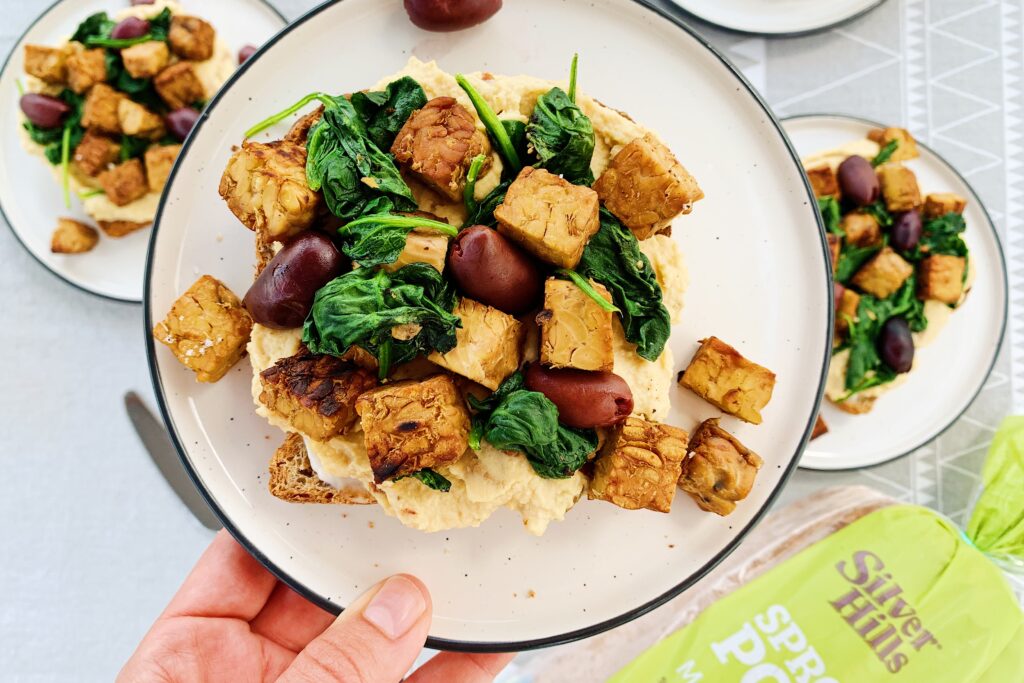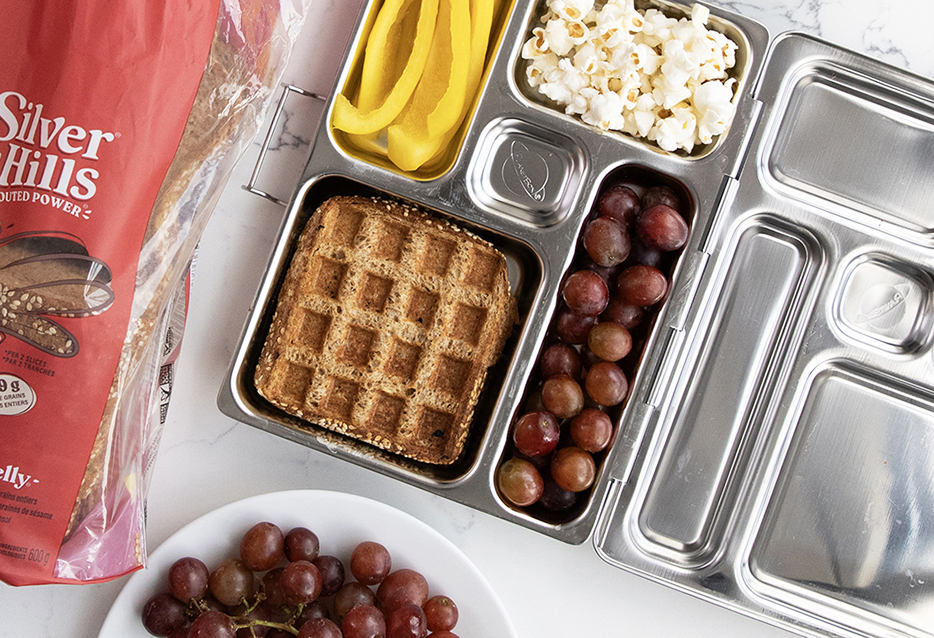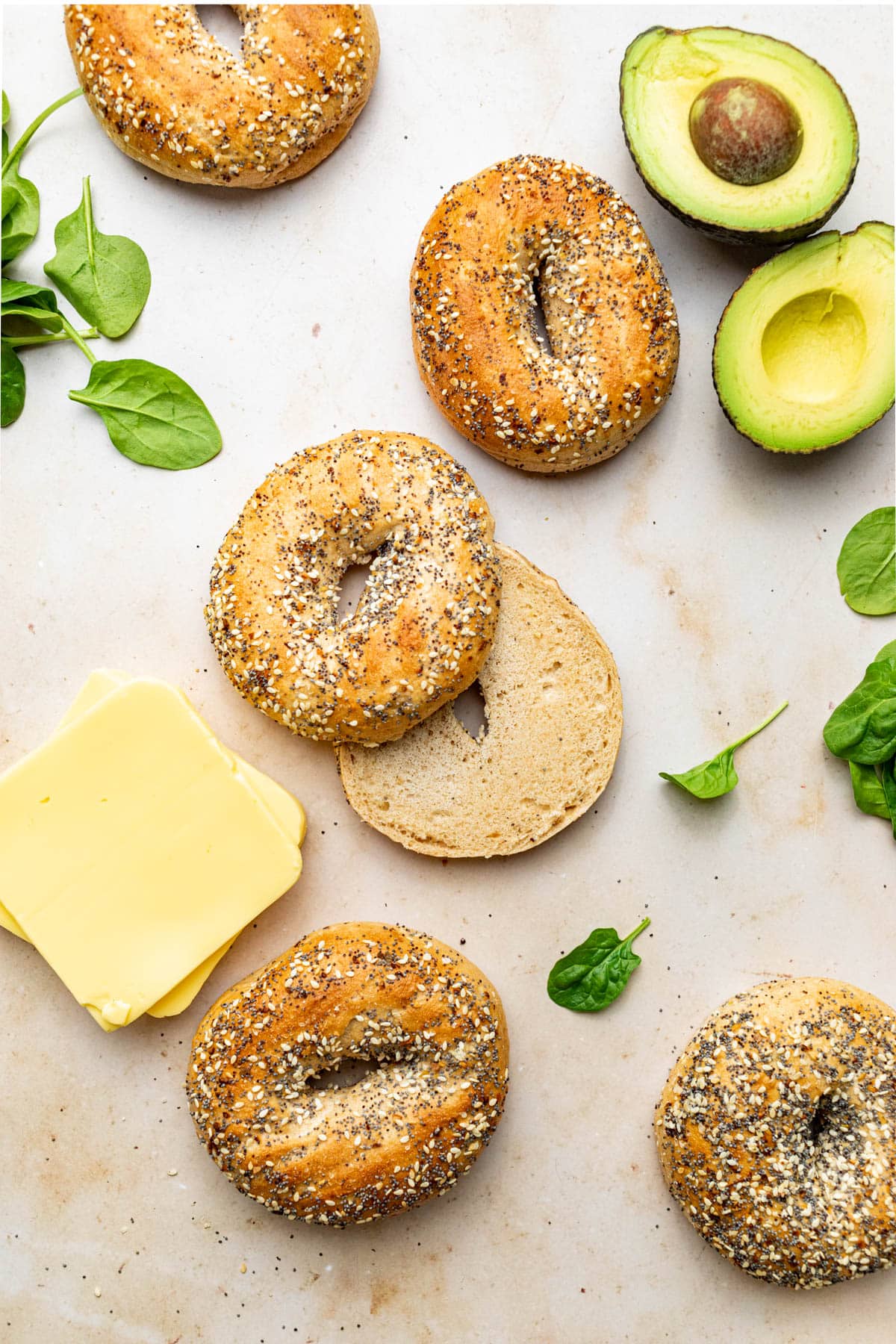Article Healthy Eating Habits at Home
February 23, 2021

Originally posted on https://desireerd.com/mediterranean-hummus-toast/
Before we all started sheltering-in-place, one of my tried-and-true pieces of advice for how to eat healthier was to cook at home more often. When you cook at home, you control the ingredient quality and how much sugar, salt, vegetable or whole grain is on your plate. Generally, home cooking is way healthier and way more economical than having other people cooking for you.
However, after months of living just steps away from our kitchens 24/7, we’ve realized that there can also be a few challenges to healthy eating at home.
For starters…well…we’re spending all of our time just a short walk away from our kitchens. It’s easy to get bored and look for entertainment in the fridge. Or to find yourself grazing out of the pantry when you were really there to get a glass of water. We’ve also learned how to comfort ourselves with food and now is a time when we’re searching for comfort. Which is totally normal – but long term, it can also diminish our energy levels and our mental wellbeing.
As a Silver Hills Bakery sponsored partner, I was asked to offer you some simple ideas on how to eat well at home so you can feel energized and well and a crazy delicious hummus toast that will likely earn a spot on your weekly rotation!
Dietitian Tips for Healthy Eating at Home
Eating well isn’t about eating ‘perfectly’ all of the time; there is no such thing as the perfect eater. Eating well means you give your body the nutrient-dense food it needs to fuel metabolism as well as making space for pleasure and enjoyment in eating.
Create a Light Structure Around Eating Times
I’m not a big fan of rigid structure in your eating habits because I feel that it disconnects you from listening to your hunger cues and what your body really needs at any given moment. However, if you find yourself wandering to the kitchen more often than is necessary, you may not be listening to those cues right now. If this feels like you, it doesn’t hurt to set mealtimes for a while and see if that feels better. If it doesn’t, let it go.
Start with the Best Ingredients
Like I said, when you’re at home, YOU get to choose the ingredients you work with. As much as possible, make those ingredients whole plant foods. You can’t go wrong! Whole plant foods are nutrient-dense…as opposed to energy-dense…meaning that they pack a lot of nutrition into each bite. And, when enjoying prepared foods look for products that are made from whole food ingredients, like sprouted grain breads.
Make Meals that Actually Fill You Up
Crafting a filling, nutritious meal is a bit of a science – and a bit of an art. First, some simple science: in order to feel full and satisfied you need enough protein, fat, and fibre. This could look like steel cut oats with hemp hearts, almond butter and blueberries…or it could look exactly like this Mediterranean toast.
The art part comes in making meals flavourful. You know that feeling when a meal simply didn’t satisfy – even if you probably ate ‘enough’? You end up wanting to eat more to get to that satisfied place. Fat is important in a meal because it carries flavour; however, we also tend to respond best to meals that have a balance of flavours. Some salt, something sweet-ish, a bit of umami and a bit of acid will do it. I’m quite convinced that there is no meal that cannot be saved by some salt, a squeeze of lemon or a bit of umami-rich soy sauce…or all three!
Snack Smart
Snacks are often where we eat higher sugar, more processed fare. So, it’s the perfect time to be mindful of eating more whole plant foods like fresh fruits, vegetables, nuts and whole grains. However, if you are staying at home and not moving much, you may also need fewer snacks. Snacks aren’t mandatory: a good rule of thumb is to eat just enough to get you to your next meal. Often, this means just a piece of fruit with a tablespoon of nut butter or some roasted chickpeas to get you through a couple of hours.
Feeling ravenous between meals is often a signal that your last meal wasn’t balanced or large enough. Always eat when you are hungry; just be thoughtful about how you can increase protein, fat and fibre at the next mealtime. If you are exploring structure around mealtimes, here’s a tip: make your snack after you eat your meal…and then close the kitchen until dinnertime. If you have your water and snack at your workspace, you’ll avoid another trip to the kitchen when the urge to eat hits. Plus, making a snack when you’re full means you’ll probably make healthier choices.
Keep it Simple
Life is hectic at the best of times; right now, many of us are downright exhausted. Don’t tell yourself that meals need to be elaborate to be good. Pair down your pantry to your favourite staples. Have an arsenal of a few spices and condiments that you love. Keep a tight rotation of easy meals like hummus toast, kale salads and pastas to streamline the mental work of food preparation.
Why are Sprouted Grain Breads Better for You?
Sprouted grain breads have been my family’s everyday breads for over a decade. I actually got my start as a dietitian doing nutrition tours in a grocery store; this is what I taught folks about sprouted grain breads:
- Breads made with sprouted grains replace breads made with flour. Flour has a small particle size, so it is rapidly digested and absorbed and can spike blood sugars – even 100% whole wheat (flour) sandwich bread has a high glycemic index.
- Sprouted grains, being intact whole grains, will have more nutrition: sprouted grain breads have on average 12 grams of plant-based protein per two slices, and a whopping 10 grams of fibre. Compare this to 7 grams of protein and 4 grams of fibre for an average supermarket whole wheat loaf.
- This higher fibre and protein content will help balance your blood sugar curve, keeping you feeling fuller and energized, longer.
- Sprouting may also help increase the content of folate and vitamin C in grains.
- Sprouting helps transform the nutrient content of the grain, including activating enzymes and reducing substances such as phytates that may make minerals less bioavailable.
Why Hummus Toast is Such a Healthy Choice

Stuff-on-toast is one of my main food groups. We put hummus on sandwiches, but often don’t think about layering it on as the main event! Hummus toast is a rocking plant-based meal because it comes packed with nutrients:
- Protein: A thick layer of hummus is going to offer a boost of protein, about 6 grams worth. So, one slice of sprouted grain bread and a 1/3 cup of hummus has about 12 grams of protein.
-
Fibre for your gut + microbiota: The same amount of hummus on toast also provides 10 grams of gut-loving fibre, including fermentable FODMAPs and soluble fibre from the chickpeas that will drive growth of beneficial bacteria in the gut that help fight inflammation.
- Energizing minerals: Both sprouted grain bread and hummus offer iron to help oxygenate your tissues and zinc to support immune function. Magnesium supports bone health and your nervous system. And sprouted grain bread is an especially good source of selenium and manganese to fight oxidative damage to cells.
- Slow burn energy: The combination of fibre, protein, healthy fats and lower glycemic carbs means that you will feel fuller, longer…leading to fewer snack attacks. What’s more, blood sugar rise is moderate so that your energy levels will be stable for hours.
Try hummus toast at home! This Mediterranean Hummus Toast recipe doubles up on protein by adding smoked tempeh and then gives you a dose of greens to make this a complete meal.
Watch Desiree RD’s Hummus Toast Instagram Reel
Desiree Nielsen is a plant-based registered dietitian, host of The Allsorts Podcast and author of 2 bestselling plant-based cookbooks, Eat More Plants and Good for Your Gut. She lives in East Vancouver with her husband, two kids and an often-neglected vegetable garden.
Scroll down to sign up for the Silver Hills Sprouted Bakery monthly email newsletter to get more ideas, recipes, and tips for healthy eating at home!


